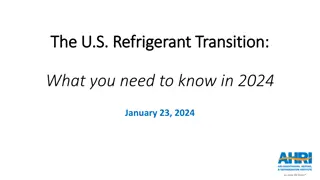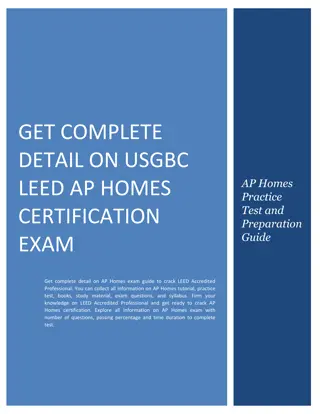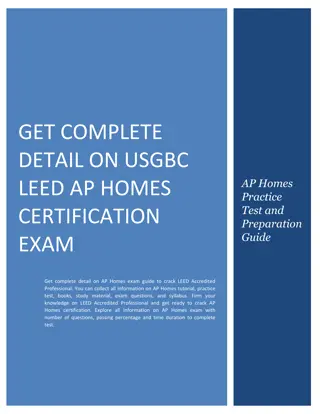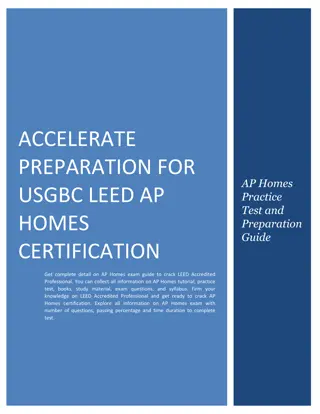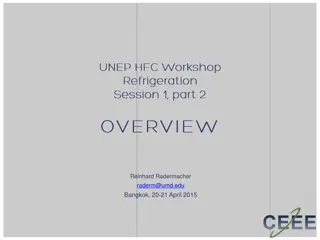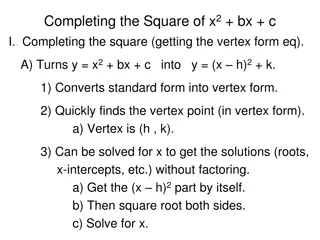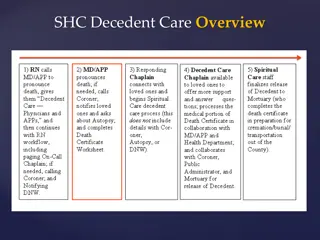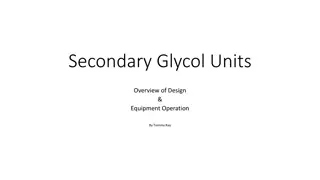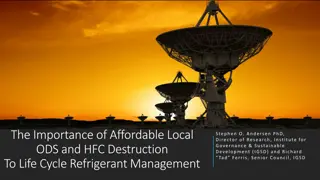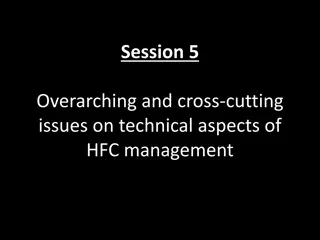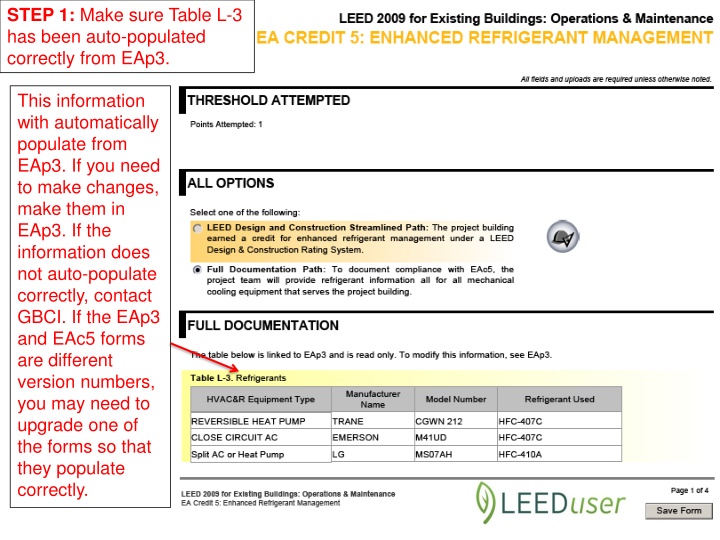
Completing LEED-EBOM Refrigerant Management Forms
Ensure accurate auto-population from EAp3 to Table L-3, complete Table EAc5-1 with refrigerant data, and confirm system accuracy for LEED-EBOM compliance. Follow steps to input necessary refrigerant information, verify data accuracy, and adhere to guidelines for fire suppression systems. Utilize default values or provide documentation for alternative values as required.
Download Presentation

Please find below an Image/Link to download the presentation.
The content on the website is provided AS IS for your information and personal use only. It may not be sold, licensed, or shared on other websites without obtaining consent from the author. If you encounter any issues during the download, it is possible that the publisher has removed the file from their server.
You are allowed to download the files provided on this website for personal or commercial use, subject to the condition that they are used lawfully. All files are the property of their respective owners.
The content on the website is provided AS IS for your information and personal use only. It may not be sold, licensed, or shared on other websites without obtaining consent from the author.
E N D
Presentation Transcript
STEP 1: Make sure Table L-3 has been auto-populated correctly from EAp3. This information with automatically populate from EAp3. If you need to make changes, make them in EAp3. If the information does not auto-populate correctly, contact GBCI. If the EAp3 and EAc5 forms are different version numbers, you may need to upgrade one of the forms so that they populate correctly.
Auto-populated Default values Auto-calculated
N = # of units of that type in the building Q = tons of refrigerant per unit STEP 2: Complete Table EAc5-1.
Rc = refrigerant charge (lbs of refrigerant per ton of cooling capacity Life = equipment life. Use default values from the LEED-EBOM Reference Guide. Alternative values can used only if documentation is provided to verify the claim.
The actual leakage rate must be measured. Input the lbs of refrigerant that were added since the last time it was needed, the Lbs of refrigerant at full change, and the days since refrigerant was last added. The leakage rate Lr (%) will auto-calculate. Note that the minimum allowable leakage rate is 0.5% even if the actual value is less than that. If days since refrigerant last added is >365, use 365.
Mr (%) = end-of-life refrigerant loss. Assumed to be 10% for all equipment types, unless documentation is provided to justify an alternative value (such as manufacturer s 30-year guarantee)
Step 3: Confirm the information provided is accurate. Confirm that fire suppression systems do not use ozone-depleting substances.

